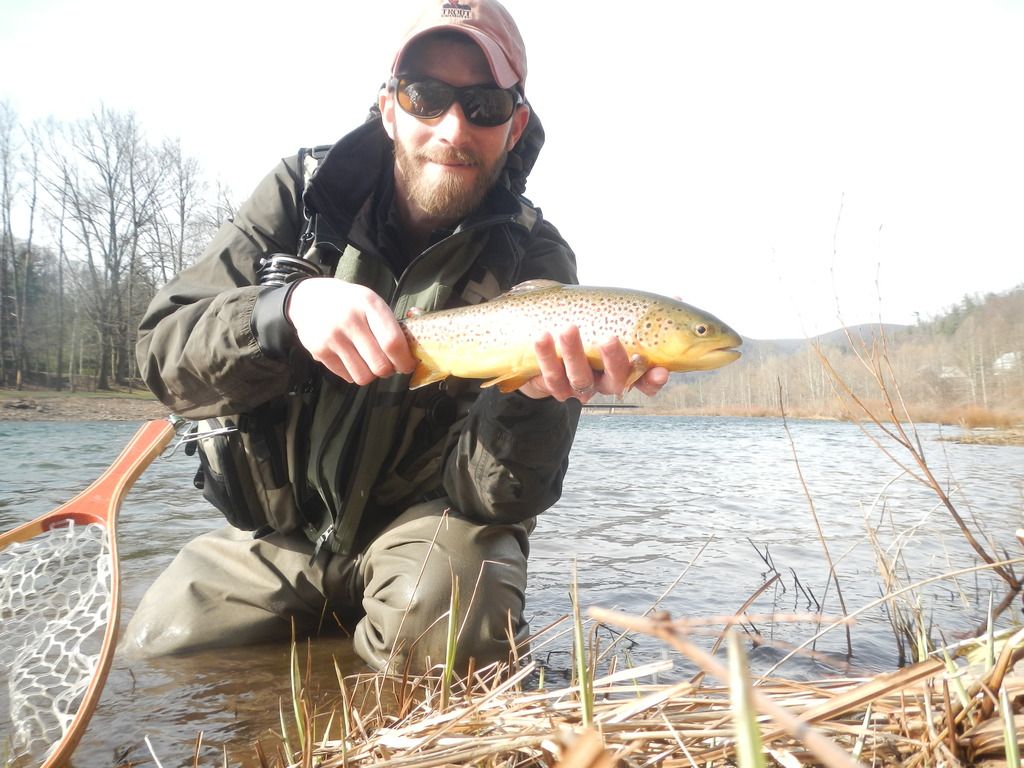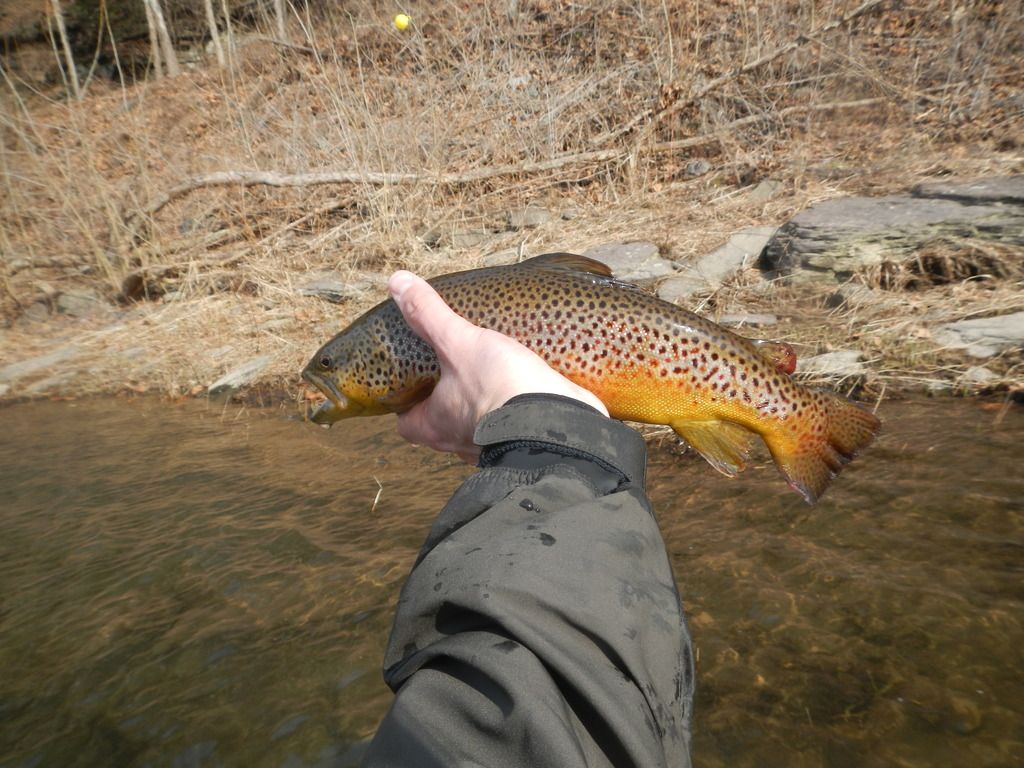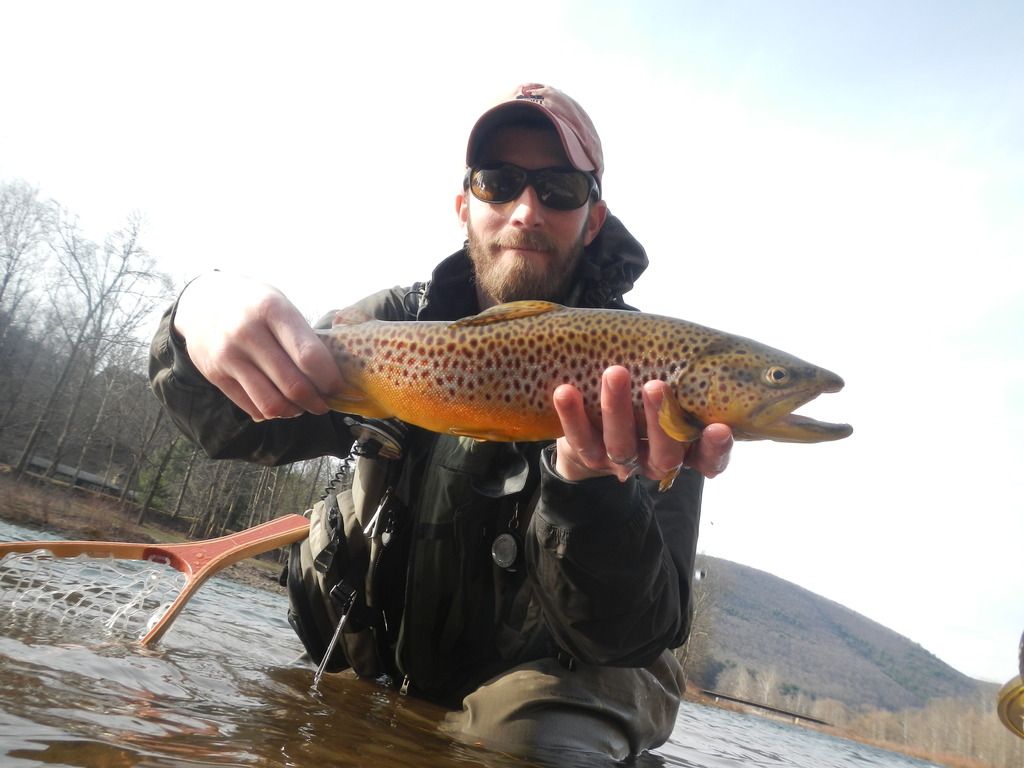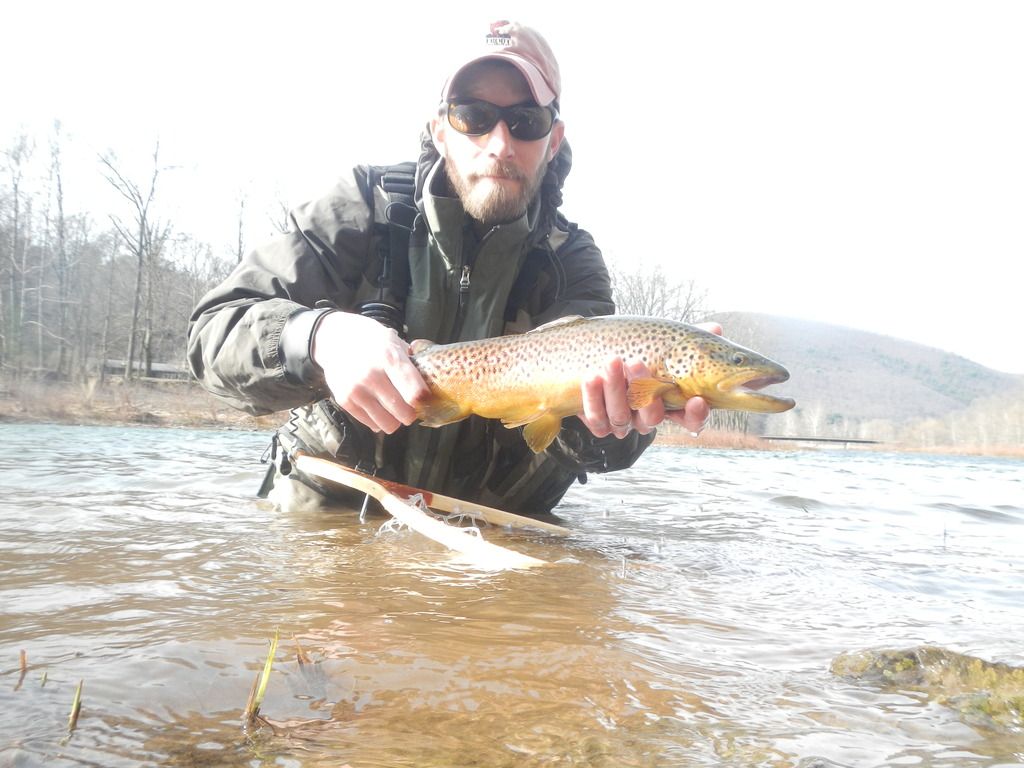Lack of a blue eye spot does not indicate that the fish is not wild. And the presence of a blue eye spot does not necessarily mean the fish is wild.
Agreed. It's an indicator. There is no foolproof indicator. But it's probably 90% accurate.
Pat I see a little red on the edge of the adipose in the pic under his email.
Maybe. Tough to tell.
Could the lack of red spots be due to diet and a lack of nutrients?
Yep. Or genetics, as you mentioned later. (there are strains with lot of red, and strains with none, and PA's wild fish are essentially mutts that show the whole spectrum).
I'd summarize it as:
Stocked fish rarely if ever have "red". They often have nothing at all and occasionally have "orange".
Wild fish rarely if ever have "orange". They often have red and occasionally nothing at all.
I've seen stocked browns with some red it them.
Can't say that I have. Not denying it. I just haven't. I have seen orange.
I'd think the absence of a particular nutrient could cause a lack of red in the wild fish possibly.
True, but location of red colored spots is imprinted at a very young age. So a fish with red can lose it. But it's rare that a fish without it can gain it.
Big browns, which have gone piscavorous, tend to lose red color, as the nutrients necessary to keep it aren't found in baitfish, it's found in crustaceans. That, and the fact that even wild big browns can have opague and beat up fins, is why big browns become harder to distinguish.
The overall coloration, on the other hand, changes pretty rapidly with the environment at all ages. i.e. the shade of brown/gold/silver, changes rapidly, often with the season.
I'm just trying to play devil's advocate a little.
Me too.
If I caught that fish in PA I'd think it was stocked.
Me too. I'd assume fingerling or long time holdover in places that such things are expected. If they are not expected, I'd be a fence sitter between wild and a stockie that's taken up residence from somewhere.
So I'm not claiming it's absolutely stocked. Just that I wouldn't be so sure of it being wild as to use it as a shining example of a wild trout in a blog about the superiority of wild trout over stockies in PA.

















